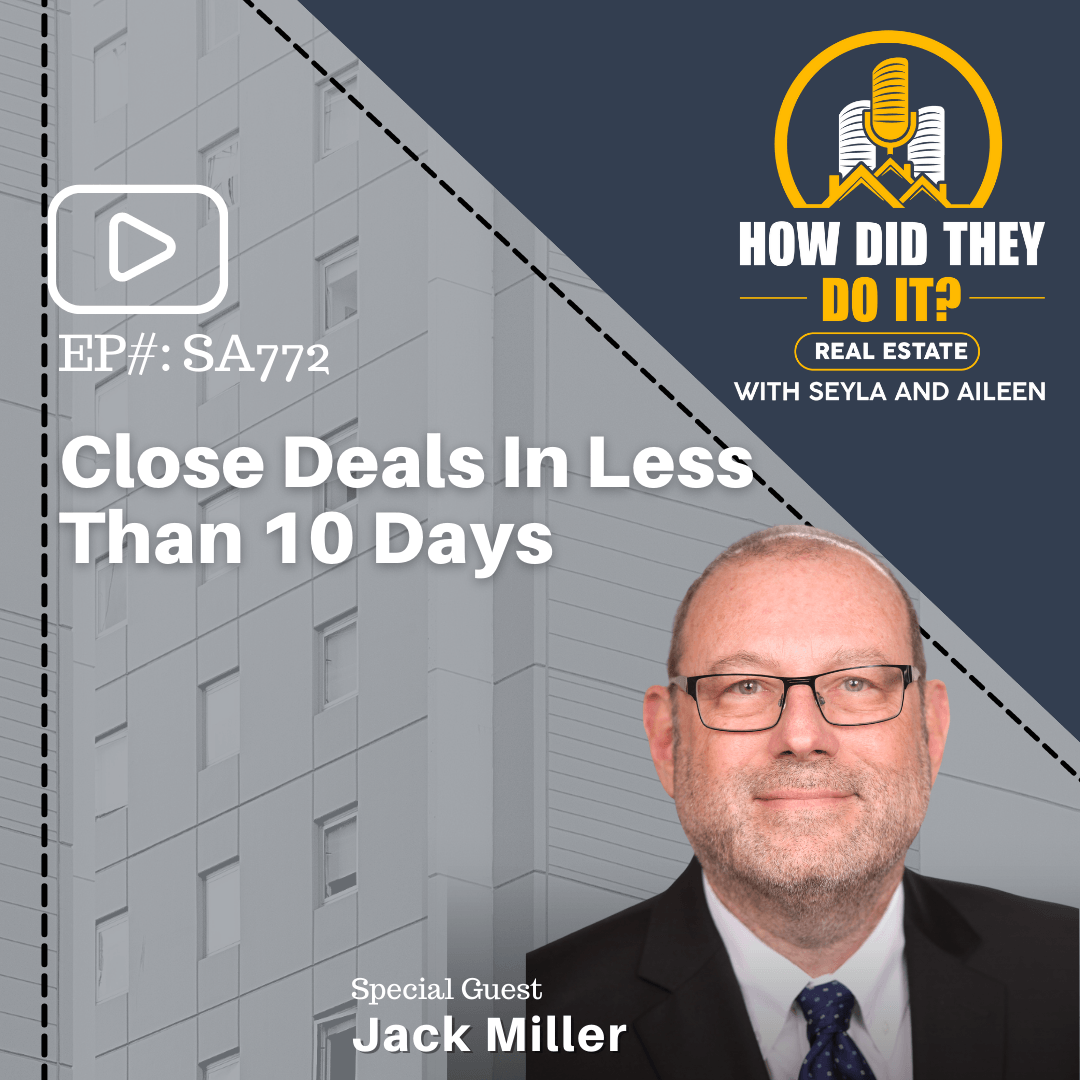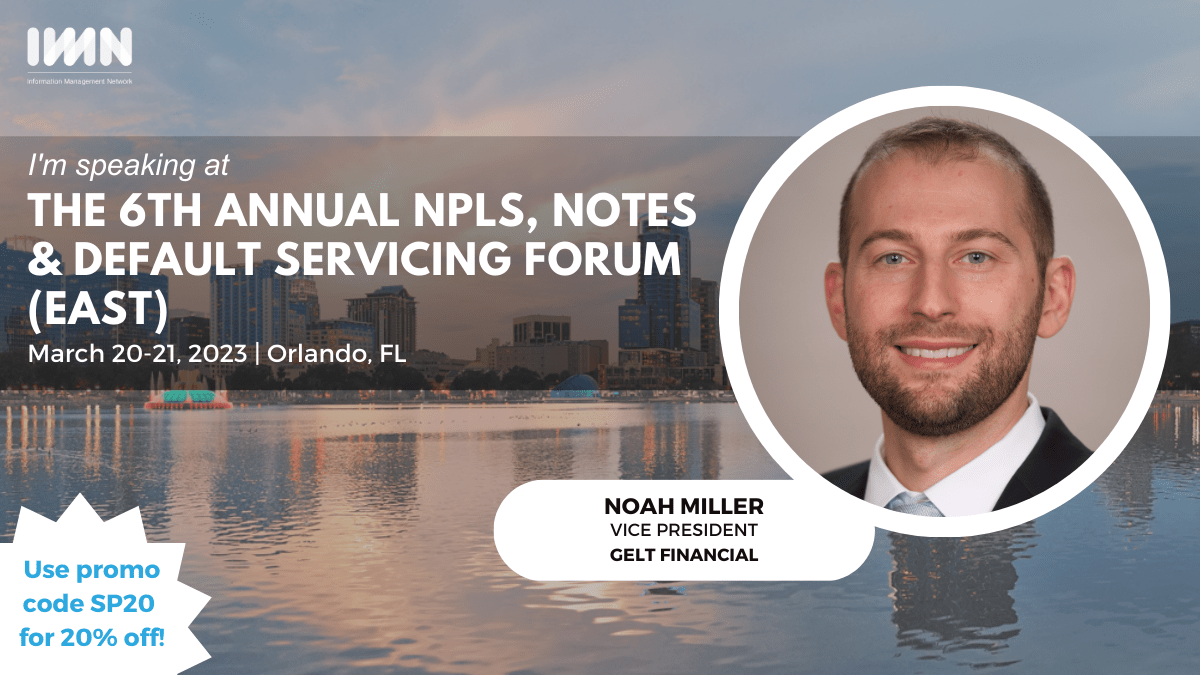Jack Miller gives a little explanation on why lenders charge prepayment penalties, the different types of them and some tips on how to analyze and negotiate the best one for your situation.
“Hello, this is Jack Miller. Hopefully, you’re having a good day. I want to make this short video and talk about prepayment penalties, why lenders charge them, what you should look out for when you’re taking them, what type of prepayment penalties there are, and give you some basic understanding from a lender’s side with the hopes that maybe you can monetize this and understand it a little bit better.
So, a couple of things. Why lenders charge prepayment penalties, it usually is for two reasons. One is they need or they want or we lend money out, we want predictability of our investment. So, if we lend someone $100,000, let’s just say it’s a 10% rate, we want to make sure that money is coming in let’s say if the loan is a three year deal, over three years or two years. There’s a few reasons for that. Usually, one of two reasons. One is most costs when you make a loan, from a lender’s perspective, are incurred up front. You have to pay the advertising to get it, the loan officer, the mortgage broker, most of the fees and costs are incurred up front. So, if you have a loan that’s going to be on your books for, let’s say, a month or a year or five years, you can amortize those costs over the length of time the loan is on your books. Let’s say it cost the lender $5,000 or $10,000 to originate the loan in cost that you may not have seen behind the scenes. If that loan pays off right away, the lender is going to lose money. But if they know they can lock somebody in for two years or three years or five years or whatever the term is, they have more predictability with spreading out their costs. The second reason is their cost of capital. All lenders get their money from somewhere else, or either they have it or they get it from somewhere else. And often they have to promise their investors that they’re going to borrow that money, or the investor is going to invest that money, they know they have a safe yield for a certain amount of time. So that’s usually the two reasons. It’s the cost to originate it is being amortized or end the cost of the capital.
So, I’ll tell you a quick story on this, and maybe it’ll illustrate it. Some very wealthy guy goes into a big bank in New York on a Friday afternoon about 02:00 o’clock when things are winding down in the summer. And he says, and everyone knows who this guy is, he’s very wealthy. He says, “I need to borrow $15,000 I don’t have time for the paperwork. It’s too much headache. I don’t want my wife to know. Give me the money in cash, and here’s the keys, and here’s the title to my brand-new Rolls-Royce. I just paid $400,000 to it. Here’s all the paperwork.” The banker is thinking, this guy needs $15,000 in cash. He doesn’t want his wife to know what’s the story. But okay, I have the keys to the Rolls-Royce. I’m going to be okay. Okay. He makes the loan. He can’t believe it, but he figures, okay, whatever he does. Monday morning, the same old guy walks into the bank and he says, “Here’s $15,000. How much do I owe you? Interest. For the two or three days.” The banker looks at it and he’s astonishment. And the old guy turns around and he says, “The interest was cheaper than parking in Manhattan.” So that’s—sometimes I’m a bad joke teller, but you get the story there, that lender would have lost money on that loan because the borrower only borrowed it for two days. So, know that those two reasons. Back to my story. I’ll stay away from jokes. Know that those two are the main reasons. One is they need to lock in their capital, and two, they have to cost them money to originate a loan. Whether people want to know it or not. Anytime something’s done, there’s a cost to it. It may be behind the scene, but there’s a cost. So, keep that in mind, and we’ll get to how to negotiate after what points you should look for.
Now, there’s a lot of different types of prepayment penalties, and I’m not going to deal with some of the CMBS and the very large commercial ones. On those, there’s things called defeasance and swaps. I’m going to deal with basic loans, which 99% of America takes. So, a lot of the time there’s a step-down prepay. So that may be, let’s say you take a 30-year loan, and they may have a 5,4,3,2,1. So what that means is if the loan amount is $100,000, for example, maybe if you pay it off in the first year, you have to pay 5%, the second year 4%, third year, 3%, so on and so forth. Or I’ve seen them 5-5, 4-4, 2-2, 3-1 but the percent of the loan comes down every year. Again, the quicker you pay it off, the more it’s going to cost you. Then there’s what’s called yield maintenance. And the general description of that is it gets a little complicated. It’s usually tied to treasury bills. It says if you borrow money at, let’s say, 5% and the rates go down to 3%, the rates go up, I’m sorry, down to 3%, that you have to pay the difference between that three and 5% that the lender would have made on the loan. So that’s a little complicated. And that’s really more for
on the CMBS deals. The truth is, I shouldn’t have even gone to that. But the other common is minimum interest beside the step down. The other common one is minimum interest. And how that works is, and that’s what we do at Gelt. I don’t know why, but I think it’s simpler. What we say is, look, if you want to borrow money from us for 24 months, we want to earn a minimum interest of twelve months. So, what that means is if you pay it off on the 11th month, you pay one month extra interest. If you pay it off on the 13th month, you don’t pay any interest on that. So, keep that. When you’re applying for a loan, not all prepays are equal. They’re all different, in fact. So, look into the details. And if you’ve listened to me before, if you know me, I try to be very detailed because most people get caught up in the details and that’s where it costs the money. So focus on the detail of the prepayment penalty that the lender is costing you. Put it on a spreadsheet and play with the different scenarios. Now, some things to consider when you take a prepayment penalty is one, will the lender limit it just to a refinance as opposed to sale? I know when we borrowed money on commercial property, we say, Hey, look, they’ll come, generally a bank or someone will come back and say they want a five year prepay. Let’s say it’s a step down 5,4,3,2,1. We’ll go back and negotiate, try to say, look, if we refinance, we’ll pay that prepayment penalty, but if we sell the property, we don’t have to. And a lot of times that’s a good compromise. This way, if you know you’re selling the property, you don’t have to pay that fee. Sometimes a lender will say yes, sometimes a lender will say no. We’ve been successful in that. But look for different points. Once you see the lender that you want to go with their prepay, you may be able to negotiate it. Just get on the phone with them and ask them. And I know people call us all the time, and usually we’ll negotiate it or rework it in a manner that works for the borrower. So, it’s a win-win situation. The other thing in a prepayment penalty, and this is something you should be aware of, some lenders say you can’t pay any of the loan back other than your regular amortized schedule. So, if you want to make an extra $100 a month or $500 a month payment, some of them don’t let you without being penalized. But others say you can pay up to 20% of the principal back every year.
So again, that’s another fine point. Look at the fine point, self-understood if you want to pay the loan back, and you could pay extra 20% a year if you have the cash flow that may be good enough for you. Most important, don’t be afraid to speak to the lender and give the lender your hesitation on the prepayment penalty as they presented it, and look for a workaround. Lenders want to make deals. They don’t make money sending out approvals unless they close. So, look for a workaround. If you’re not comfortable with that prepayment penalty, rather than just present no prepayment penalty, present a compromise or a middle ground. Because usually that middle ground, you can work it where it works for the lender, and it works for you. For example, we do deals all the time, and somebody will say, look, I can’t live with this. I’m uncomfortable with this. So, we’ll modify it. We’ll say, instead of a prepay like one we did, it was a fix and flip, a rehab product. They didn’t want to pay any prepay because they thought they were going to sell it right away. So, we said, okay, no prepayment. Pay us a certain percent, two or 3% exit fee. So, we effectively traded the prepay for an exit fee. The borrower was happy, we were happy. And ultimately, when you’re doing this, you’re putting a chance, and it’s like betting. You’re betting on something that’s going to happen, the performance, whether you’re going to be able to pay off the loan or not pay off the loan. But my advice to people would be look for the middle ground with the prepayment. Look at the details, understand them. You have to know them back and forth. Way too many people just say yes and sign things, and they don’t deal with the consequences until it’s too late and then it’s too late. So, look what the lender is presenting you. And don’t be afraid to go back to the lender and say hey look, I’m uncomfortable with this. How about this? This doesn’t work, but compromise on this. So, life is about the compromise and about finding a win-win situation for all. So, I would encourage you that. Anyway, I hope I didn’t drag on too long. I apologize for my poor sense of humor and my joke. I’ve heard many people tell the story much better than when they tell it. So have a great day. And don’t forget, if you need non-bank financing, check us out at geltfinancial.com. “When your bank says no, we say yes” and self-understood. Leave your comments. I answer them. If you have any questions, send them in an email. Take care and have a great day. Take care. Bye.”
Category: Education

























